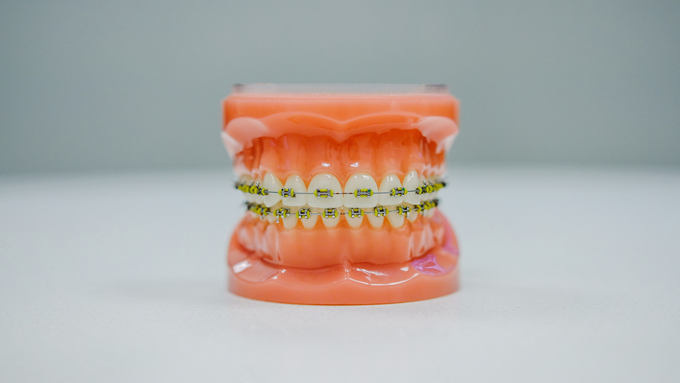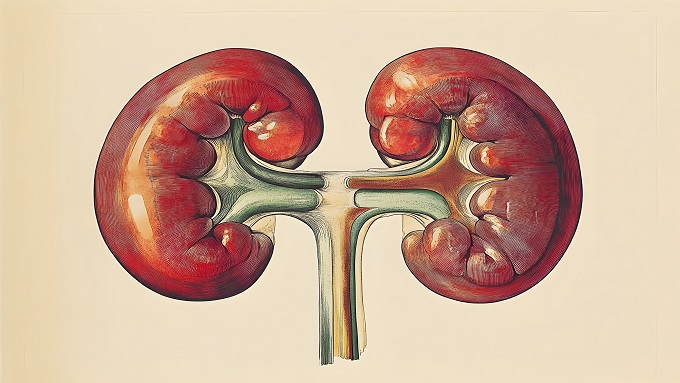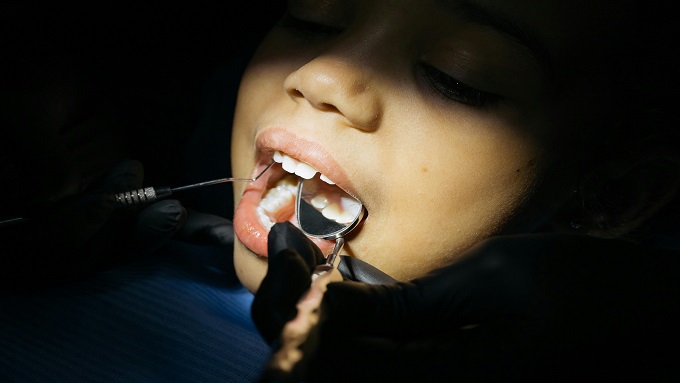OSTEOINDUCTIVE CAPACITY OF PLATELET-RICH FIBRIN VS BIODENTINE FOR MANDIBLE FRACTURE

Downloads
Highlights
- Biodentine has undergone thorough research as a bone grafting substance due to its ability to promote bone regeneration and effectively treat root or tooth fractures.
- PRF and Biodentine can stimulate osteogenesis, affecting bone repair, particularly in mandibular fractures.
Abstract
Background: Mandibular fracture is one of the most common fractures. The most common treatment for mandibular fractures is fixation. Therefore, xenogeneic agents such as platelet-rich fibrin (PRF) and Biodentine accelerate the reparative process. Biodentine is an interesting active ingredient that can induce bone regeneration. PRF and Biodentine can promote bone healing, but no literature discusses the differences between PRF and Biodentine osteoinduction mechanisms in treating mandibular fractures. Objective: This article aimed to compare the effect of osteoinductive PRF with Biodentine for mandibular fractures. Material and Method: The research was conducted as a scoping review by performing a thorough search of the PubMed, Scopus, Science Direct, Elsevier, and Google Scholar databases. The study was obtained based on literature studies in the form of journals and textbooks in the last ten years (2013-2023). Result: The osteoinductive effect and mechanism of Biodentine in enhancing bone repair are likely correlated with releasing biologically active ions from calcium silicate cement and stimulating gene expression Runx-2. PRF has an osteoinductive role, causing the mechanism of releasing growth factors such as PDGF, VEGF, TGF-β, and IGF that promote the osteogenic process. Conclusion: There was no significant difference in the osteoinduction effect of PRF and Biodentine because these materials have different mechanisms of action for bone repair.
Apte, R. S., Chen, D. S., Ferrara, N. 2019. VEGF in signaling and disease: Beyond discovery and development. Cell, 176(6): 1248–1264. doi: 10.1016/j.cell.2019.01.021.
Augustina, E. F., Rivai, N. R., Gifary, H. M. 2023. The expression of matrix metalloproteinase-13 (MMP-13) on xenograft and PRF in bone regeneration. Brazilian Dental Science, 26(2): 1–7. doi: 10.4322/bds.2023.e3366.
Barczak, K., Palczewska-Komsa, M., Sikora, M., et al. 2020. BiodentineTM – use in dentistry. Literature review. Pomeranian Journal of Life Sciences, 66(2): 39–45. doi: 10.21164/pomjlifesci.666.
Daltoé, M. O., Paula-Silva, F. W. G., Faccioli, L. H., et al. 2016. Expression of mineralization markers during pulp response to Biodentine and mineral Trioxide Aggregate. Journal of Endodontics, 42(4): 596–603. doi: 10.1016/j.joen.2015.12.018.
Dewi, N. P., Susanti, M., Vani, A. T., et al. 2022. Dextra mandibular fractures in traffic accident patients. Jurnal Kewarganegaraan, 6(4): 7093–7099. Available at: http://repo.unbrah.ac.id/id/eprint/ 353/1/057.+Fraktur+Mandibula+Dextra+pada+Pasien+Kecelakaan+Lalu+Lintas (1).pdf.
Diachkova, E. Y., Popova, S. V., Arazashvili, L. D., et al. 2022. Complicated mandible fracture treatment with xenogenic bone graft. Applied Sciences, 12(5): 2384. doi: 10.3390/app12052384.
Gandolfi, M. G., Iezzi, G., Piattelli, A., et al. 2017. Osteoinductive potential and bone-bonding ability of ProRoot MTA, MTA Plus and Biodentine in rabbit intramedullary model: Microchemical characterization and histological analysis. Dental Materials, 33(5): 221–238. doi: 10.1016/j.dental.2017.01.017.
Hakam, H., Abdel Moneim, R., El Deeb, M. 2019. Osteoinductive potential and bone healing capacity of nanocrystalline Hydroxyapatite (nHA) versus Biodentine of surgically created defects in rabbits. Alveolar process (an animal study). Egyptian Journal of Histology, 902-917. doi: 10.21608/ejh.2019.16561.1164.
Ho, C. C., Fang, H. Y., Wang, B., et al. 2018. The effects of Biodentine/polycaprolactone three"dimensional"scaffold with odontogenesis properties on human dental pulp cells. International Endodontic Journal, 51(S4). doi: 10.1111/iej.12799.
Karthik, R., Sanjay, P. 2015. Incidence, aetiology and pattern of mandibular fractures in pondicherry. Journal of Evolution of Medical and Dental Sciences, 4(104): 16946–16950. doi: 10.14260/jemds/2015/2555.
Kaskos, H. H., Ali, A. 2020. Facilitating osteogensis of Mineral Trioxide Aggregate and Biodentine by autogenous bone marrow (experimental study on rabbit). Journal of Duhok University, 23(1): 144–148. doi: 10.26682/sjuod.2020.23.1.15.
Neiva, R. F., Gil, L. F., Tovar, N., et al. 2016. The synergistic effect of leukocyte platelet-rich fibrin and micrometer/nanometer surface texturing on bone healing around immediately placed implants: An experimental study in dogs. BioMed Research International, 2016: 1–9. doi: 10.1155/2016/9507342.
Ocak, H., Kutuk, N., Demetoglu, U., et al. 2017. Comparison of bovine bone-autogenic bone mixture versus platelet-rich fibrin for maxillary sinus grafting: Histologic and histomorphologic study. Journal of Oral Implantology, 43(3): 194–201. doi: 10.1563/aaid-joi-D-16-00104.
Pripatnanont, P., Balabid, F., Pongpanich, S., et al. 2015. Effect of osteogenic periosteal distraction by a modified Hyrax device with and without platelet-rich fibrin on bone formation in a rabbit model: A pilot study. International Journal of Oral and Maxillofacial Surgery, 44(5): 656–663. doi: 10.1016/j.ijom.2014.12.004.
Rajasekharan, S., Martens, L. C., Cauwels, R. G. E. C., et al. 2018. BiodentineTM material characteristics and clinical applications: A 3 year literature review and update. European Archives of Paediatric Dentistry, 19(1): 1–22. doi: 10.1007/s40368-018-0328-x.
Rajendran, R., Kunjusankaran, R. N., Sandhya, R. N., et al. 2019. Comparative evaluation of remineralizing potential of a paste containing bioactive glass and a topical cream containing Casein Phosphopeptide-Amorphous Calcium Phosphate: An in vitro study. Pesquisa Brasileira em Odontopediatria e Clínica Integrada, 19(1): 1–10. doi: 10.4034/PBOCI.2019.191.61.
Shokri, T., Misch, E., Ducic, Y., et al. 2019. Management of complex mandible fractures. Facial Plastic Surgery, 35(6): 602–606. doi: 10.1055/s-0039-1700878.
Suprianto, K., Hidayati, H., Nilam, C., et al. 2019. Eggshell hydroxyapatite as a potential bone graft in periodontal therapy. MKGK (Majalah Kedokteran Gigi Klinik), 5(3): 76–87. doi: 10.22146/mkgk.65729.
Tang, J., Shen, Z. S., Qin, W., et al. 2019. A comparison of the sealing abilities between Biodentine and MTA as root-end filling materials and their effects on bone healing in dogs after periradicular surgery. Journal of Applied Oral Science, 27. doi: 10.1590/1678-7757-2018-0693.
Wang, J., Sun, Y., Liu, Y., et al. 2022. Effects of platelet-rich fibrin on osteogenic differentiation of Schneiderian membrane derived mesenchymal stem cells and bone formation in maxillary sinus. Cell Communication and Signaling, 20(1): 88. doi: 10.1186/s12964-022-00844-0.
Copyright (c) 2024 Marda Agung Nugraha, Indra Mulyawan, Ardian Jaya Kusuma Amran

This work is licensed under a Creative Commons Attribution 4.0 International License.
1. The journal allows the author(s) to hold the copyright of the article without restrictions.
2. The journal allows the author(s) to retain publishing rights without restrictions.
3. The legal formal aspect of journal publication accessibility refers to Creative Commons Attribution 4.0 International License (CC-BY).
































